Review and photos by Bokisaurus
Part 3 of Kaiyodo Dinoland Natural History review series
The state of Montana today is one of the most scenic and picturesque states in the Unites States. It is also one of the riches in fossils of prehistoric animals, especially dinosaurs.
If you drive around the many lonely and winding roads, you have a feeling that you just stepped backed in time. Impressive red colored cliffs tower above, vast plains go on for miles as far as the eyes can see. There are plateaus as well as deep canyons carved out by ancient rivers.
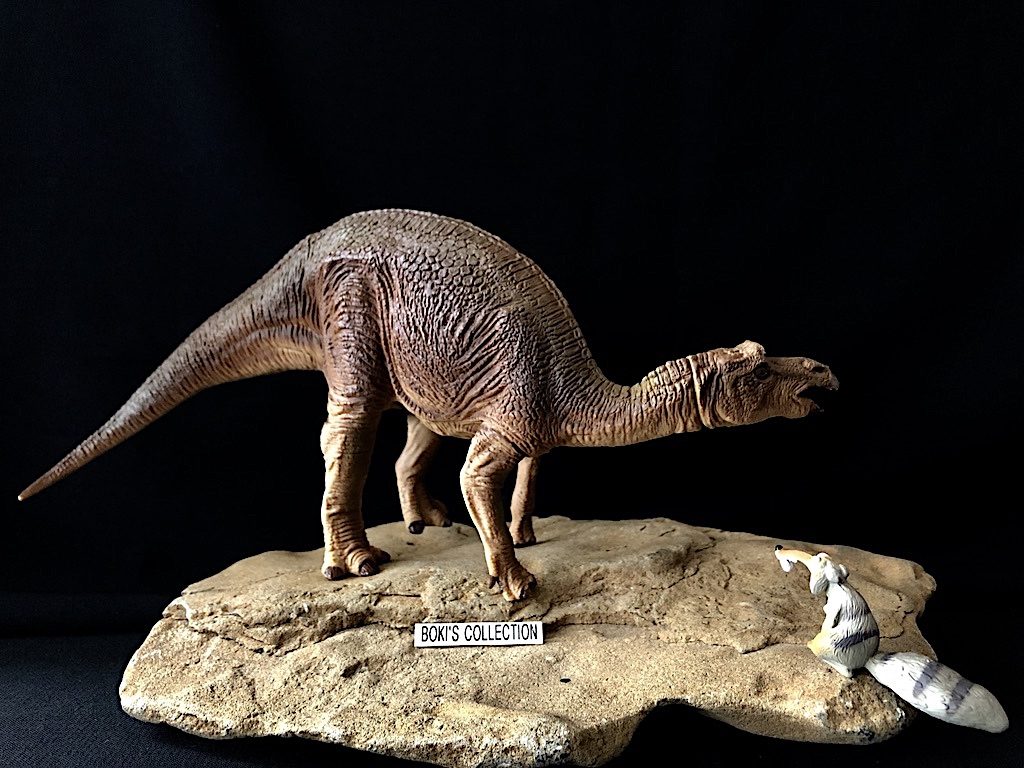
Back in the Late Cretaceous one species of Hadrosaurs dominated this scene as they migrated to this place in huge numbers, dotting the landscapes like moving boulders, drowning out other species around them.
This is Maiasaura peeblesorum, the famed “good mother lizard”,one of the few dinosaur that has a feminine name.
Discovered in 1979 by Laurie Trexler and later described by famed paleontologist Jack Horner. Physically, Maiasaurus looks like a generic hadrosaur, and rather conservative looking.
It didn’t have a flamboyant head crest seen in other members of the group, and with an estimated length of 30 feet, it wasn’t the largest either, although still a large animal.
It’s claim to fame has nothing to do with beauty or spectacular ornamentation, or large size. What made it a well known species is the discovery of its nesting ground in western Montana famously called “Egg Mountain”.

Here at last we see evidence of dinosaurs congregating in huge number to nest. Here we we are offered a very rare glimpse of how this animal lived, reproduced, and raised it’s young. The exquisite fossil preservation in this area also gave scientist the rare opportunity to discover not just eggs, but also embryo and juveniles in various stages of growth. This unique and rare find makes Maiasaura one of the best studied and documented dinosaur.
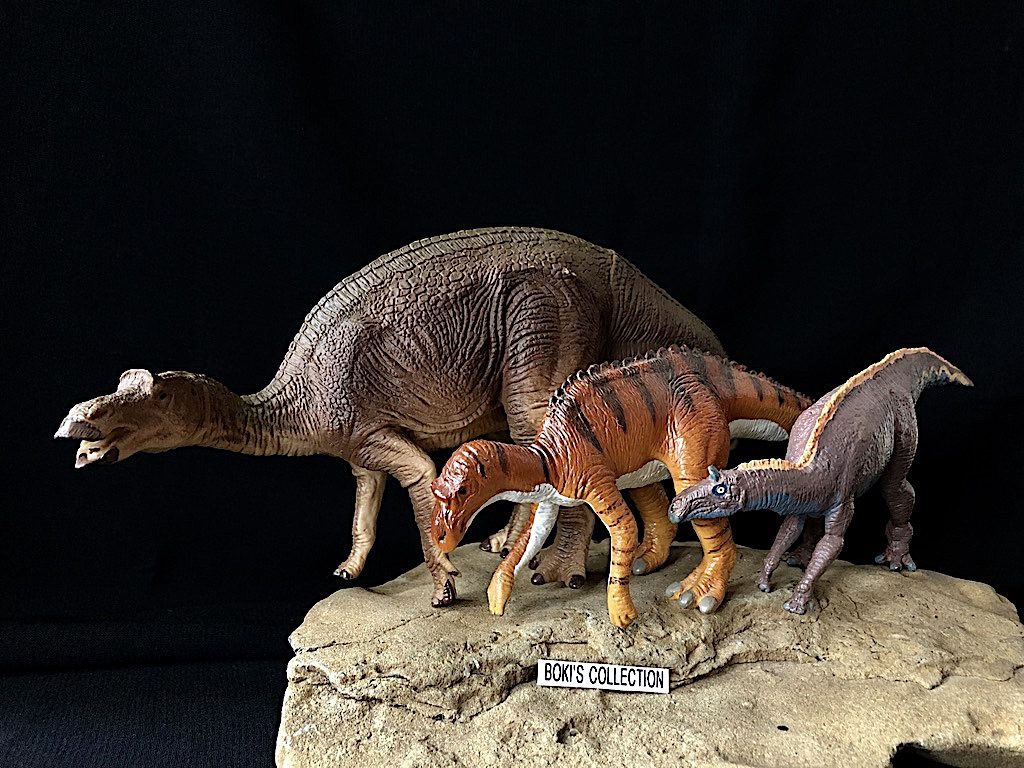
Despite this level of fame, in the toy world, figures of this species is rather rare. I supposed the lack of any unique head ornamentation is a factor.
As I have mentioned in my two previous review, Kaiyodo in the 1980’s and 90’s produced a series of kits called Dinoland. This series are large hollow figures with scale ranging from 1:20 – 1:35.
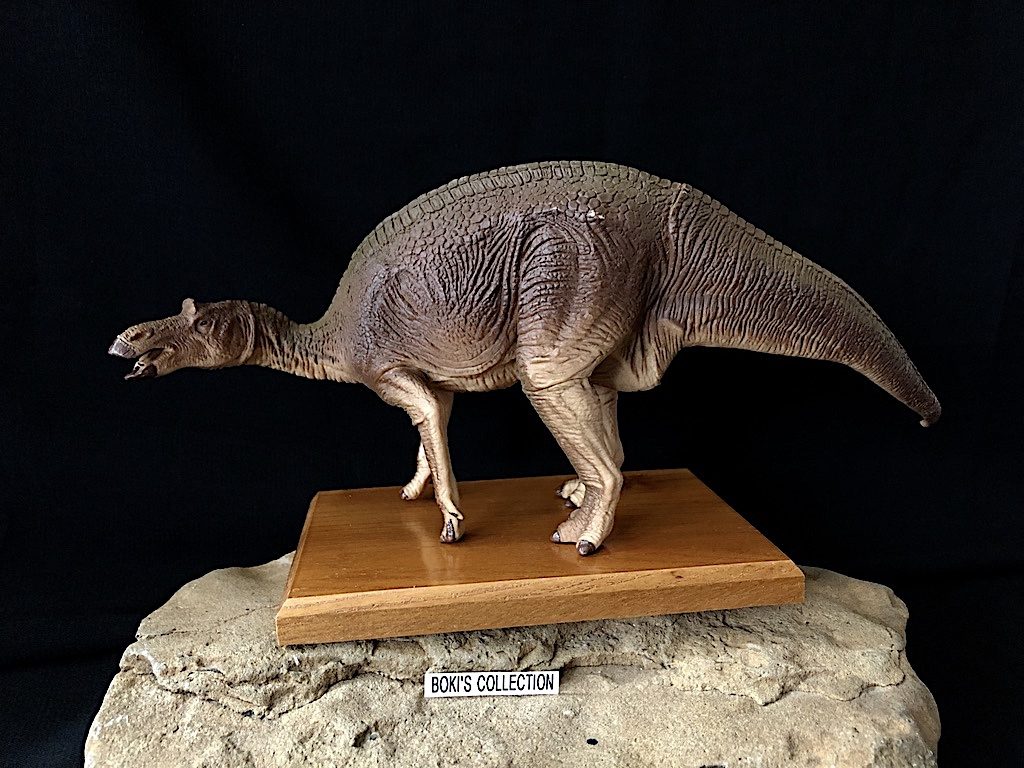
This series were later produced as build up and painted models. The figure we are reviewing today is part of that series.
The Maiasaura unlike the majority of the figures from the series is scaled at 1:35, so it’s a larger figure. It measures 14” inches long from the tip of the beak to the tip of the tail, and just a hair under 7” inches tall from the top of the hips.
This is perhaps one of the very first mass produced Maiasaura figure made, I’m not sure exactly what year it was released, but it could be older that the first Carnegie figure which was released in 1989 if I’m not mistaken.

Sculpted by Araki ( more known for his recent works for the Favorite Co.), the figure is nicely done as expected.The small crest on the head is prominent and unmistakable. It has the flat front with a ridge on the back and also above the eyes. There are plenty of small and delicate details on the crest as well, from skin lines to small bumps.
The eyes are small and painted black, which worked really well for this figure.
Lots of big and small skin wrinkles encircle the eye and you can see some small bumps as well. Just after the eyes you can see the ear opening.
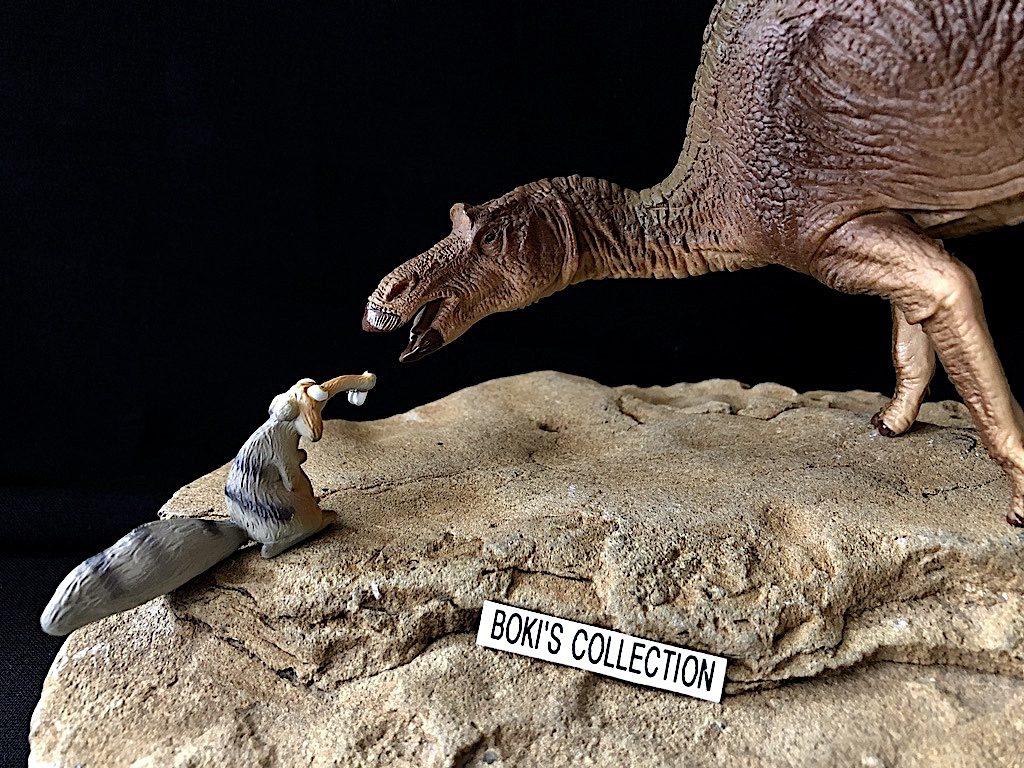
The snout is long. Like many of Araki’s sculpts, there is definitely some shrink-wrapping going on in the head. The nostrils are big and nicely sculpted. The cheeks are well defined and the sunken center gives it the illusion of the animal in the act of chewing. This action is supported by the mouth being slightly open.
The beak is strong and textured with groves to give it some texture and is painted a darker shade of brown.
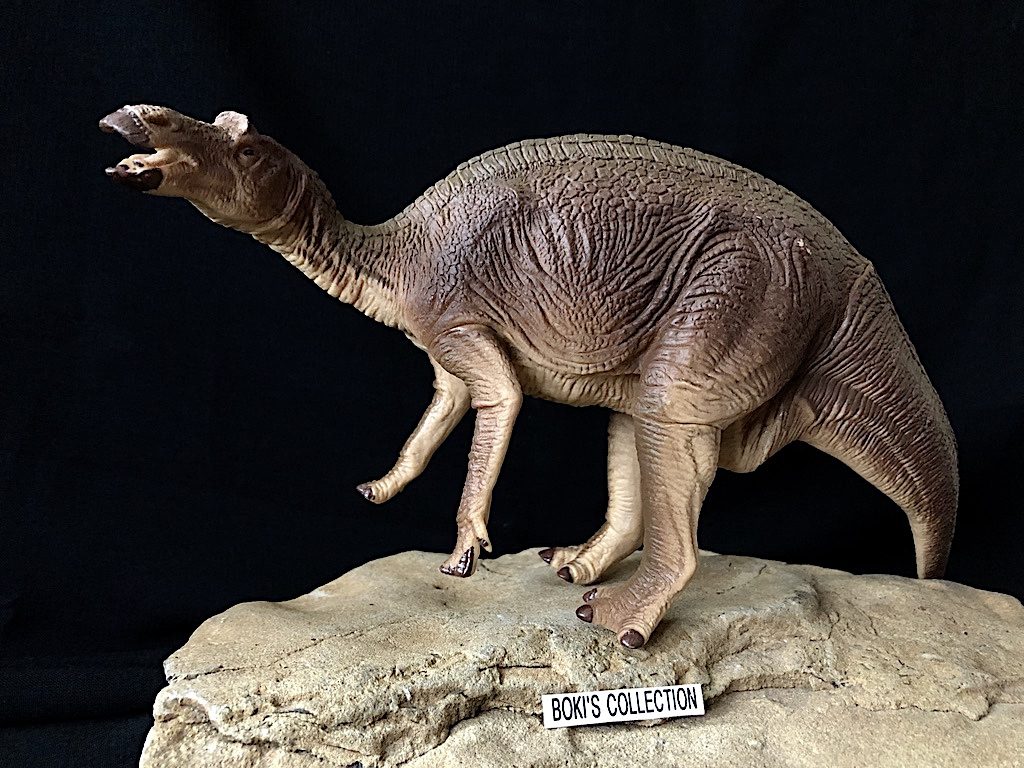
The body is nicely proportioned and very rich in skin details. There are many skin folds from the throat down to the lower half of the body. Mixed in with these skin folds are small bumps/scales of varying sizes and shapes.
Moving up midway, these scales becomes larger and you can see hexagon shaped scales alternating between small and large.
Curiously, just like in the Chasmosaurus figure from the same series, there are rows of really large overlapping scales on the top of the back that runs along the entire length beginning at the back of the head crest all the way down to the tail. Its an odd feature and looks like a body armor. Since this is seen in several of Araki’s sculpt for the line, I wonder if this was a fad back then or just a trademark artistic style of his at that time. On the bright side, at least it doesn’t look too distracting on this figure as it did on the Chasmosaurus.
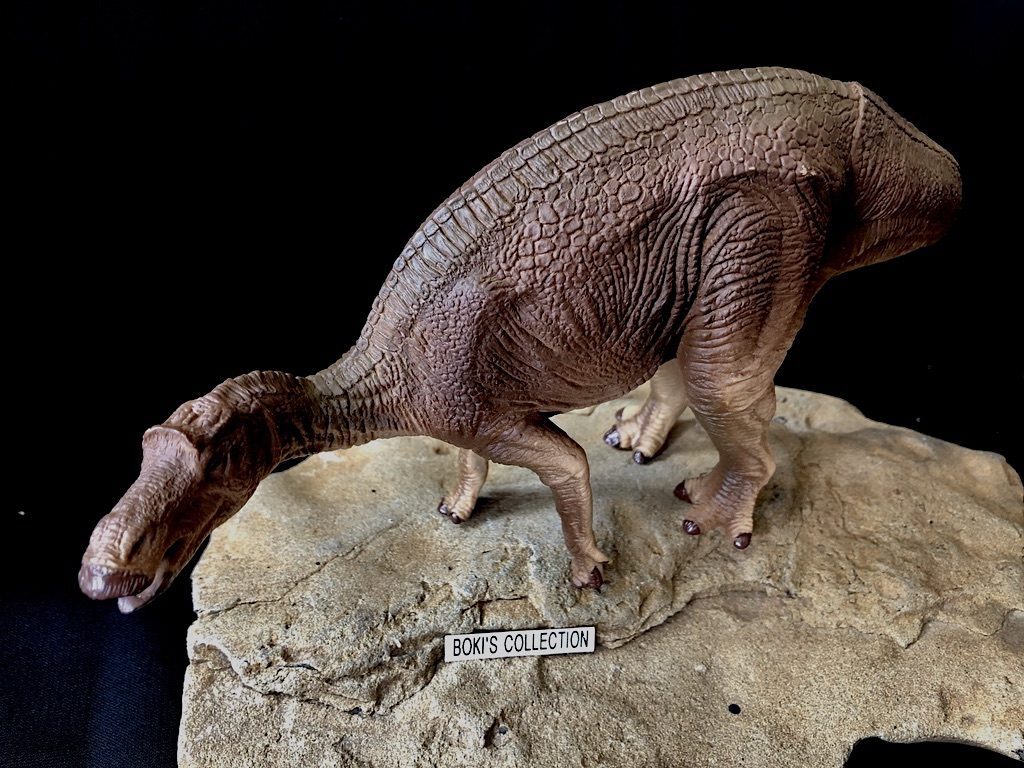
The overall body color is a simple chocolate brown. There is a lighter tan color used on the lower half of the body that gives these areas some highlights and breaks down the brown monotony. It would have been better if they gave it a little more.
The front legs are slender when compared to the larger and more robust back legs. Based on the fossil evidence, Maiasaura is both a biped and quadruped, it all depends on what the animal is doing.Plenty of skin folds and wrinkles on the legs and thy have good muscle definitions that really illustrate the strength and weight of the animal.
The feet are nicely sculpted with sharp details. Unfortunately, the nails are also painted the same brown color as the beak.
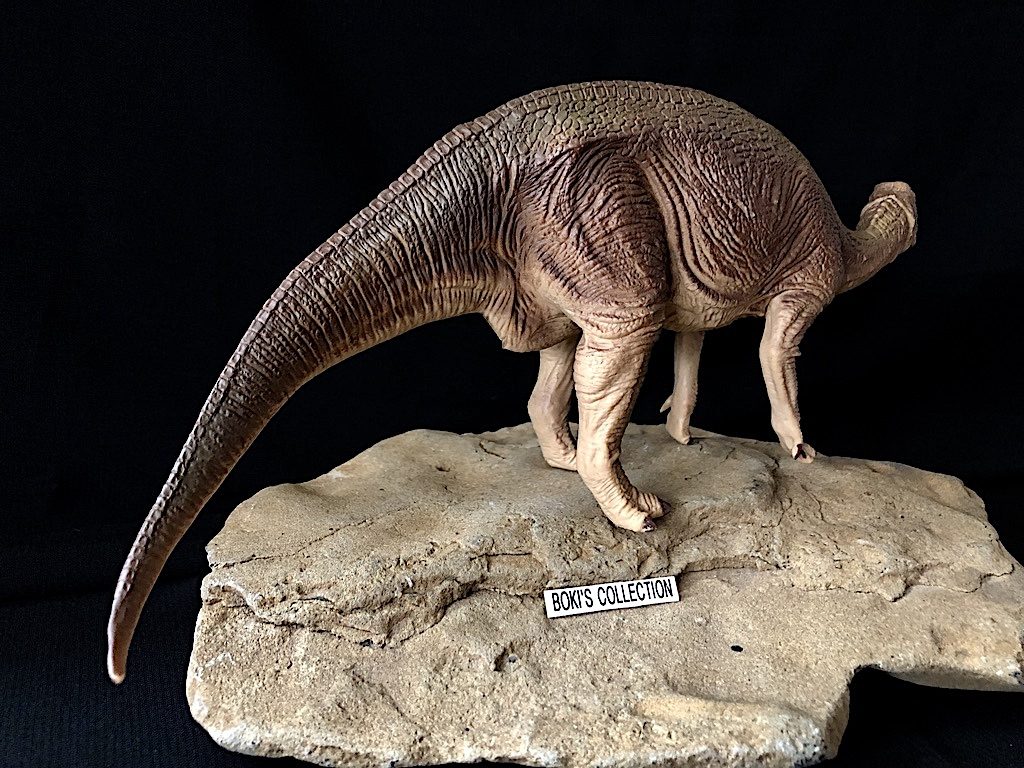
The tail is long and very muscular, as it should be. This is significant considering how old this figure is. It is now known that hadrosaurus did have muscular tail base and not the often skinny ones we commonly see on hadrosaur figures.
The Maiasaurus is one of the very few figure from the large Dinoland series that almost have a flawless seams. There are six parts for this model: the head, back and from legs, and the tail. They did a great job in obscuring these points as well as aligning them precisely that you have to look very close to notice where the seams are.
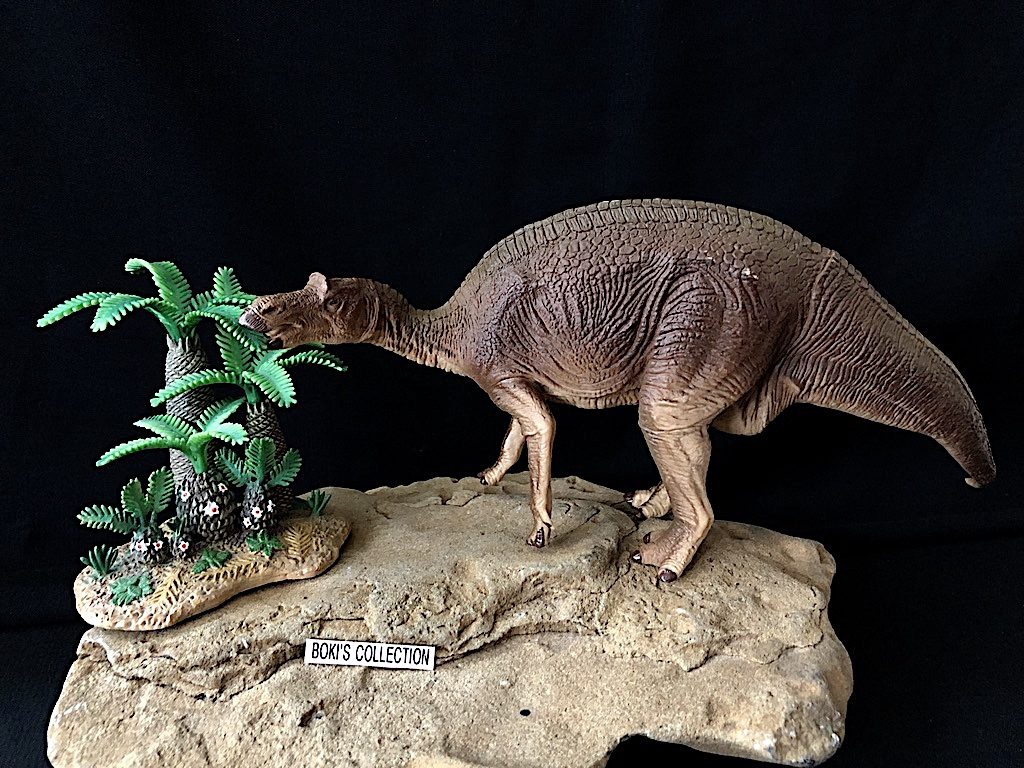
Pose wise, nothing too exciting but also not boring. Overall it has a gentle look to it. The animal is posed with its head slightly tilted to the right, with its front leg slightly pulled back. The long tail is held high and curves towards the left. There is a slight hunched shaped on the back.
You can interpret this pose as leisurely eating ( mouth open), or an animal just being cautious , or simply raising its head and scanning the surroundings for any signs of danger. Maiasaura lived with other species of dinosaur, both predators and other herbivores.
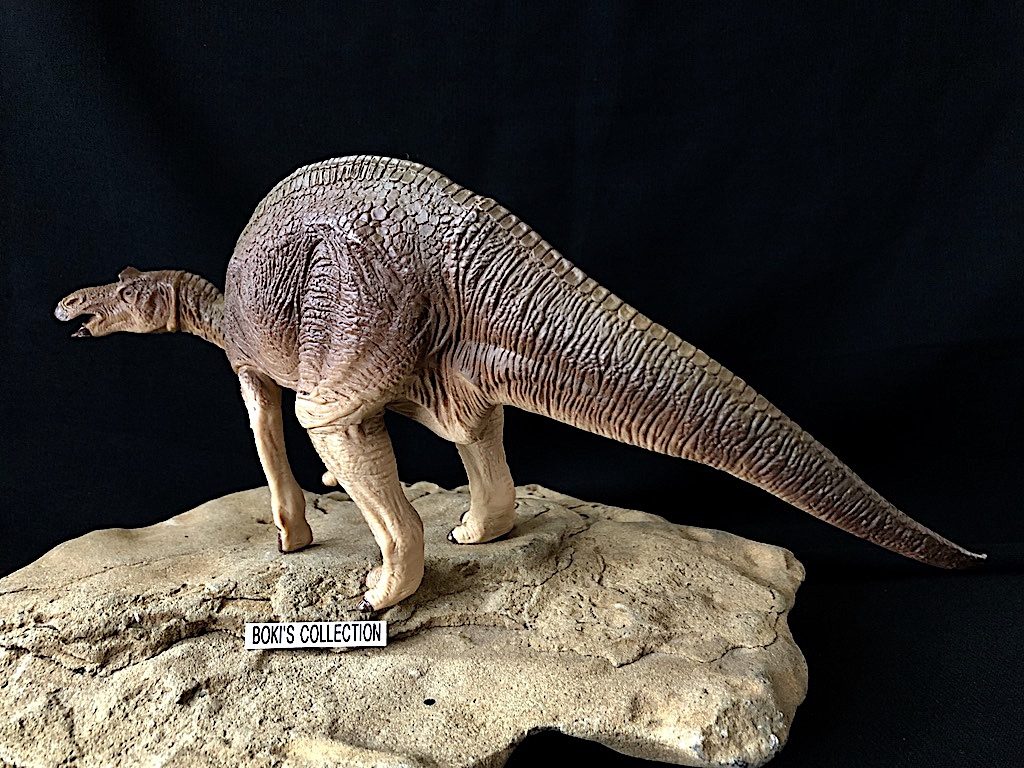
Maiasaura’s nesting and family life is well known so it is not surprising to see some companies capitalizing on this and produce figures that came with eggs.
One of the first figure, the Safari Carnegie one from 1989, shows an animal sitting on top of her nest. Of course this is not possible. Just because an animal nested does not automatically means it sat on its eggs. No eggs is strong enough to handle a multi-ton weight on top of it!
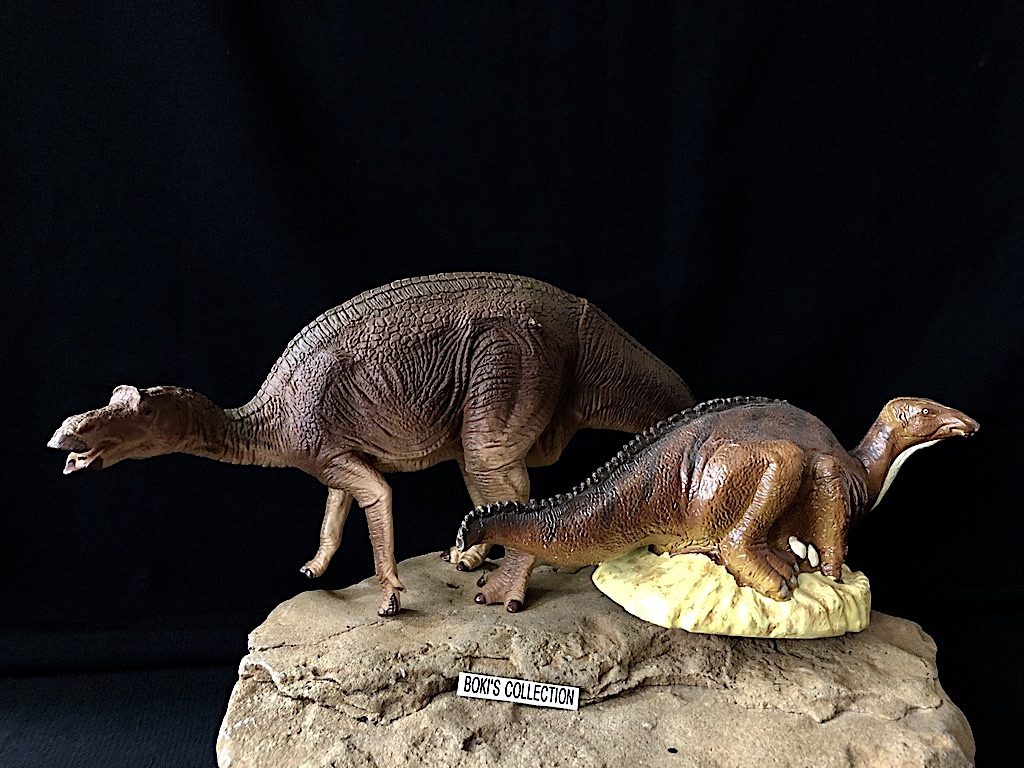
Instead, Maiasaura used vegetation to cover their eggs and the head from the rotting plants incubated the eggs, very much like what crocodiles and some birds do today. There is also evidence that the hatchlings stayed in their nest for some time and that the adults cared for their young.
Kaiyodo opted not to capitalized on the nesting phenomenon and did not include a nest or hatchling with this figure.
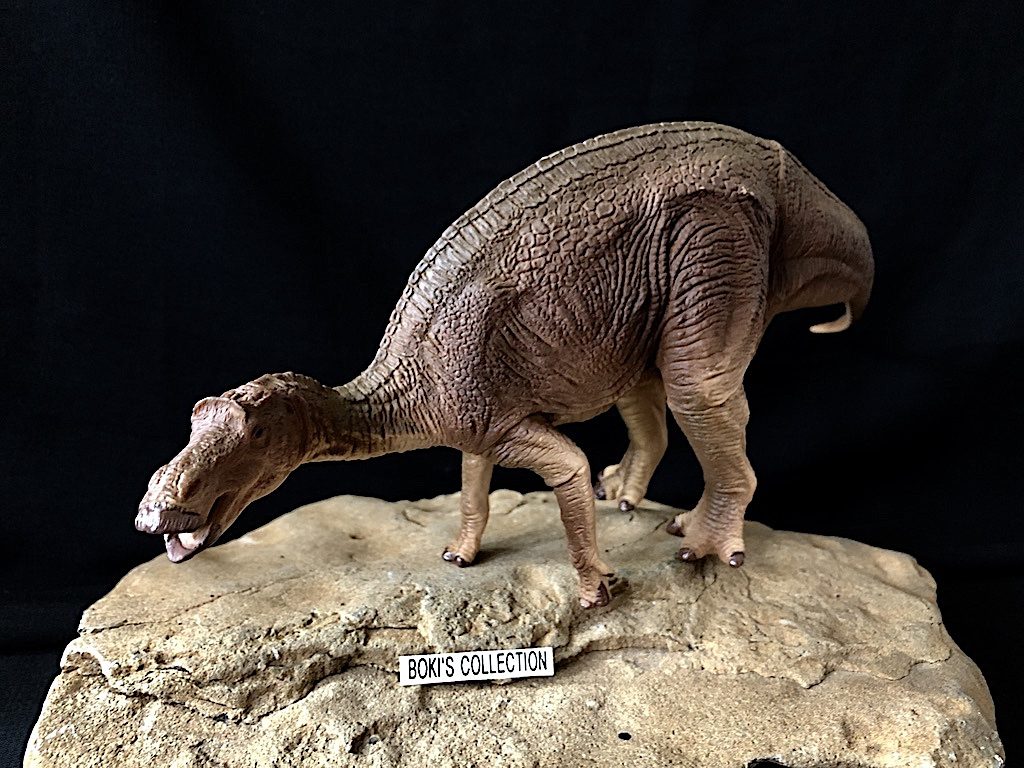
In my previous Dinoland figure review, I mentioned that the majority of the figures from this series were used for the book Dinopix, a beautiful photo essay book.
Unfortunately this lovely figure did not make it in any of the pages, which is a shame since it would have looked amazing in one of those background. It also came with a simple brown box as well as a wooded base to put the figure on.

In closing, this is the best Maiasaura figure out there in my pinion. Despite its age, it is pretty accurate and very well sculpted.Its large size definitely makes it a really standout among my hadrosaur herd.
Even years ago when I got this figure, they were already rare and hard to acquire at a reasonable price. I’m sure that they are even harder to find now and more expensive. But if you even come across one that is affordable, it really is a figure worth acquiring.
Lets hope that we will see more of the “good mother” in other brands in the not so distant future.

Well, that concludes our review. Thank you for reading, I hope you like it. Take care and until the next review, Cheers!
.
Disclaimer: links to Ebay and Amazon on the DinoToyBlog are affiliate links, so we make a small commission if you use them. Thanks for supporting us!




Good review and nice model … Where do you order it? I have searched it on amazon, ebay and google, but didnt it
greetings 🙂
Hey there!
I got this figure years ago and they were already rare back then.
I haven’t searched eBay for months, but that could be your best shot of finding it and others from the set.
Always nice to see an ornithopod review!
This is quite a beautiful figure and an excellent review. Thank you